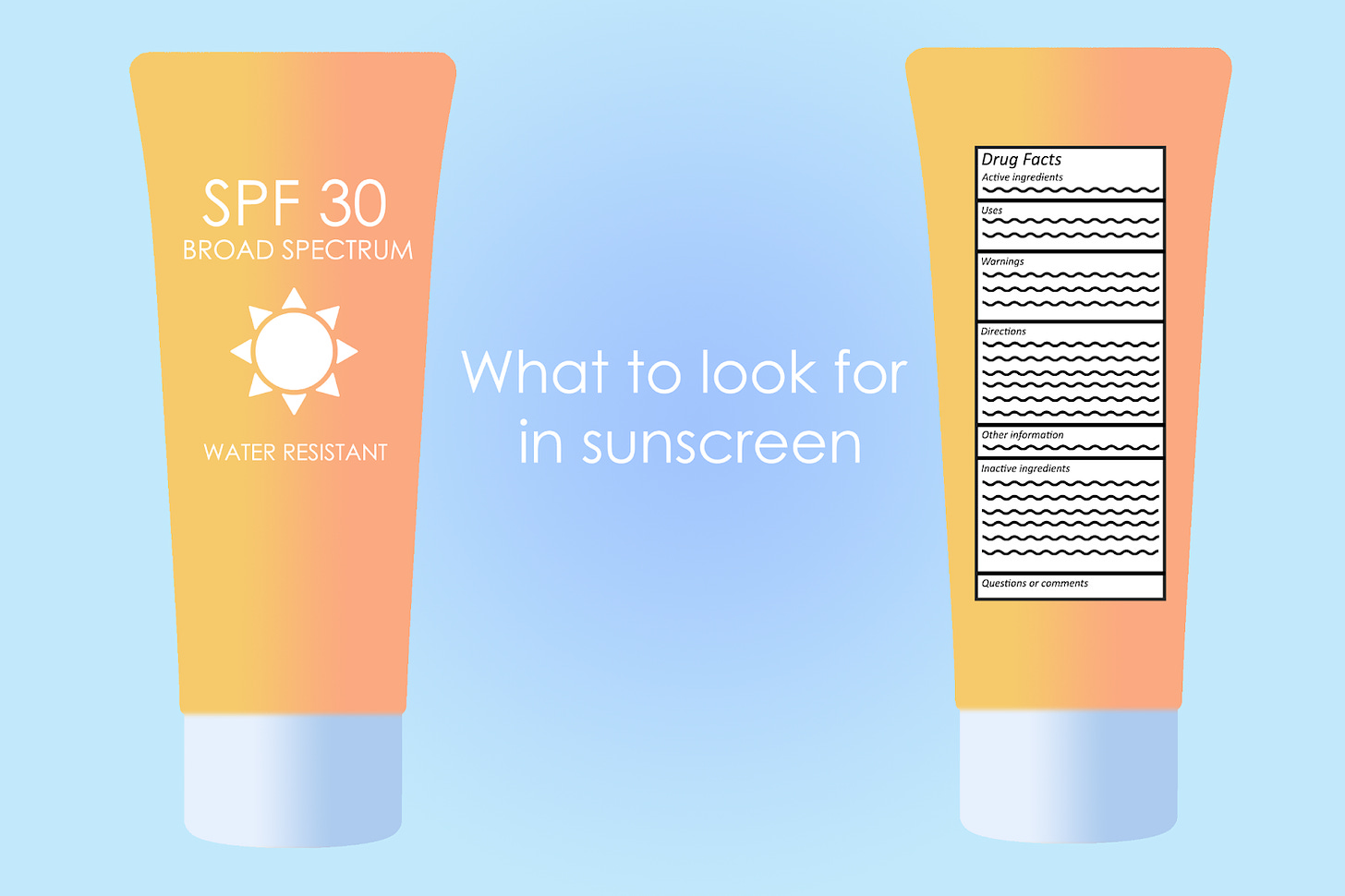Mineral sunscreens aren’t absorbed into the body, so they may be safer than chemical ones. But when you need sunscreen, any type of sunscreen is better than none.
Protecting your skin from the sun is the best way to avoid skin cancer and visible signs of sun damage. While it’s true that some people have more natural UV protection, no skin type is completely protected. Health experts agree that any sunscreen is better than none.
Nonetheless, figuring out which sunscreen to buy may seem complicated.

➡️ Sunscreen basics
First, look for the basics on the front of the sunscreen bottle.
The American Academy of Dermatology recommends sunscreens that are:
✅ Sunburn protection factor (SPF) of 30 or higher
✅ Broad-spectrum (blocks UVA and UVB rays)
✅ Water (and sweat) resistant
Sunscreen forms: Lotions or creams provide the best coverage. Gels are good for oily or hairy areas. Sticks work well on the face around the eyes.
For infants: Sunscreen shouldn’t be put on babies less than 6 months old without checking with their clinician first.
A note on SPF: Higher SPF (above 30) provides a bit more protection, but they don’t last any longer. All sunscreens need to be applied at least every 2 hours.
How to tell which type of sunscreen yours is: If you flip the bottle around, you’ll find a ‘Drug Facts’ [archived link] label, listing the active ingredient(s). Many different chemicals are used as sunscreen, but they all fall into two categories: mineral or chemical (or a mixture of the two). Zinc oxide and titanium dioxide are the only two mineral sunscreens. So, if the sunscreen label has a different active ingredient than these two, it’s a chemical sunscreen.
➡️ So which sunscreen is best?
The best sunscreen is the one you’ll use regularly. But for some people or situations, one type may be better. Here’s a summary. For more details on each type, read further below.
Mineral sunscreens are best for:
- Children older than 6 months
- People who are pregnant or nursing
- Anyone with sensitive skin
Chemical sunscreens are best for:
- Someone wanting the most water-resistant sunscreen
- People who are bothered by the feel or appearance of mineral sunscreens.
- Anyone needing sunscreen when that’s the only one on hand
➡️ Mineral (or physical) sunscreens
What are they?
They’re inorganic chemicals that filter UV light. You’ll see them listed as zinc oxide and/or titanium dioxide
How do they work?
They work by blocking or reflecting UV light, shielding your body from the sun’s harmful UV rays.
What’s good about them?
- They stay on top of your skin and aren’t absorbed into the body so the FDA classifies them as “generally recognized as safe and effective” (GRASE).
- They’re recommended for children and during pregnancy.
- They’re preferred for people with eczema, acne, or rosacea.
What are their downsides?
- They can leave a white film on the skin, feel heavier, and be harder to wash off.
- Since they can be harder to use, they might not be applied well and often enough.
- On average, they tend to cost more.
Are nanoparticles in mineral sunscreens safe?
“Micronized” or “nanosized” mineral sunscreen formulations are easier to spread and more comfortable to wear. The FDA still considers them GRASE since absorption, if any, is negligible. However, nanoparticles can be absorbed if inhaled so it’s best to avoid using sunscreen sprays and powders.
➡️ Chemical sunscreens
What are they?
They’re a group of organic chemicals that filter UV light. Common FDA-approved examples in the U.S. include avobenzone, octisalate, and homosalate.
How do they work?
They trap harmful UV rays before they damage your skin and release it as heat away from the body.
What’s good about them?
- Easy to apply and light-weight
- Doesn’t leave a white film on skin
- May be more water resistant
What are their downsides?
- They need to be applied at least 15 minutes before sun exposure.
- They’re absorbed through the skin and enter the bloodstream. This doesn’t necessarily make them unsafe to use, but it does mean they have the potential to be unsafe.
- Chemical sunscreens can wash off into water supplies and harm marine animal life, including corals.
Are they safe?
The FDA doesn’t consider chemical sunscreens “unsafe.” But they also don’t categorize them as GRASE. The FDA says people can continue using chemical sunscreens since they provide a clear health benefit by protecting skin from UV damage. During childhood and pregnancy, however, experts recommend using mineral sunscreens.
Note: In an upcoming post, we’ll explain the concerns with chemical sunscreens more in depth.
Remember: Using sunscreen is only one sun-safety habit. Sunglasses, covering up, and being sensible about sun exposure are important too. Maximizing other forms of sun protection can help cut down on the amount of sunscreen needed, saving you time, money, and worry.
Additional reading:
HOW TO DECODE SUNSCREEN LABELS
Sunscreen: How to Help Protect Your Skin from the Sun
Are People of Color at Risk for Skin Cancer?
Skincare Chemicals and Coral Reefs


